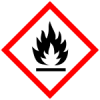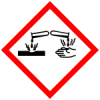The Producer has a plan to phase out by 2024 pesticides listed in category 2 of the Globally Harmonized System of Classification and Labelling of…
Coalition status
BCI Phase out by 2024
Fairtrade Orange
This list contains 39 pesticides. The list is valid as of January 2018. Pesticides that may only be used under very specific conditions, for example…
FSC highly restricted HHPsChemical pesticide presenting two or three out of the following hazards: acute toxicity, chronic toxicity and environmental toxicity.
GCP ProhibitedPesticides in the Prohibited List are not used.
This includes pesticides that are:
Listed under the Stockholm Convention, Rotterdam Convention or…
Rainforest Exception, Rainforest prohibited PesticidesSAN HHP: phase-outThe SAN List of Highly Hazardous Pesticides consists of 230 pesticides:
SAN HHP Pesticides are classified as Highly Hazardous Pesticides according to…
UEBT ProhibitedThe use of Prohibited Agrochemicals is prohibited for certified, prioritised and verified ingredients, because they are considered Highly Hazardous…
Details
Type: Pesticide
Use: Insecticide, Metabolite, Fumigant
Example applications: Stored grain;Stored animal feed;Leaf-stored tobacco;Cotton seed
Example pests controlled: Bean weevil;Fruit moth;Grain beetle;Meal moth;Tobacco moth;Meal worm;Leaf beetle;Flour beetle;Pink bollworm;Maize weevil
Mode of action: Nerve toxin with respiratory action, mitochondrial complex IV electron transport inhibitor
Source: PPDB
Toxicty
GHS safety labels
About Globally Harmonized System of Classification and Labelling of Chemicals (GHS)
From Wikipedia: The Globally Harmonized System of Classification and Labelling of Chemicals (GHS) is an internationally agreed-upon standard managed by the United Nations that was set up to replace the assortment of hazardous material classification and labelling schemes previously used around the world. Core elements of the GHS include standardized hazard testing criteria, universal warning pictograms, and harmonized safety data sheets which provide users of dangerous goods with a host of information. The system acts as a complement to the UN Numbered system of regulated hazardous material transport. Implementation is managed through the UN Secretariat. Although adoption has taken time, as of 2017, the system has been enacted to significant extents in most major countries of the world.[1] This includes the European Union, which has implemented the United Nations' GHS into EU law as the CLP Regulation, and United States Occupational Safety and Health Administration standards.
- H220

Extremely flammable gas
Class: Flammable
Subclass: Gases - H314

Causes severe skin burns and eye damage
Class: Corrosion/irritation
Subclass: Skin - H330

Fatal if inhaled
Class: Acute Toxicity
Subclass: Inhalation - H400

Very toxic to aquatic life
Class: Aquatic
Subclass: Acute
